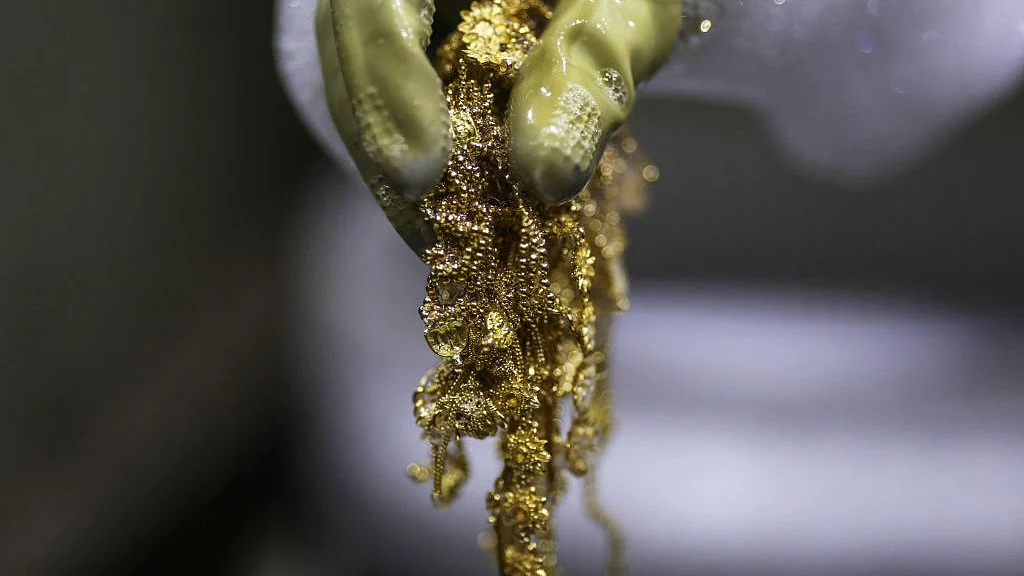Households in COVID-19 vulnerable districts bought more gold during a pandemic: IIMA study
The shift towards gold is accompanied by a shift away from other financial assets and cash, as per the IIMA working paper titled 'Gold in household portfolios during a pandemic: Evidence.

Households in India's COVID-19 vulnerable districts allocated more gold to their savings portfolio during the pandemic compared to households in other districts, as per a study conducted by the Indian Institute of Management Ahmedabad (IIMA).
The shift towards gold is accompanied by a shift away from other financial assets and cash, as per the IIMA working paper titled 'Gold in household portfolios during a pandemic: Evidence from an emerging economy'.
The study, published on IIMA's website on June 30, captured the variation in the intensity of the crisis using two main indicators: COVID-19 cases per 1,000 population, and satellite-based night-time lights intensity.
The survey covered 142 districts across 21 states.
India is the second-largest consumer of gold (in the form of jewellery) in the world and an average Indian household invests 11 per cent of its overall holdings in the precious metal, as per the study paper.
It said addressing geographical inequalities in the availability of health facilities would assuage the panic among the public and could result in a reduced flight to safe assets such as gold.
Furthermore, a better access to financial instruments and institutions can reduce the preference to hoard gold during times of crisis, it observed.
"We find evidence that the portfolio allocation of households in COVID-19 vulnerable districts (CVD), the top-third of districts by COVID-19 cases per 1,000 population, is tilted towards gold during the pandemic compared to households in other districts," the paper said.
As per the study, the share of gold in household savings portfolios in the CVD districts is significantly higher by 6.9 percentage points compared to other districts, and is accompanied by a shift away from financial asset holdings by 4.1 percentage points.
Households in CVD districts with lower prior gold holdings (defined as the share of gold in household savings in a normal period) show a more pronounced shift to gold during the pandemic, it said.
"It is likely that those households that have a lower share of savings in gold will have a higher appetite to save gold during the pandemic owing to the uncertainty caused by it," it said.
A similar shift towards gold is observed for districts that experienced the most adverse economic impact—as measured by lower night-time lights intensity—during the pandemic, the study showed.
Such districts showed a 2.9 percentage points higher allocation to gold compared to districts that were relatively less economically impacted, as per the paper authored by Balagopal Gopalakrishnan and Sanket Mohapatra (IIMA faculty members), and Oindrila Chatterjee (associated with the India Gold Policy Centre at the IIMA).
Households in districts with greater banking access and better health infrastructure showed a smaller shift towards gold, it said.
Access to better health infrastructure moderates households' allocation to gold as superior health facilities may reduce the need for precautionary savings in safe assets, it observed.
The paper also said the households' allocation towards gold savings in CVD districts was relatively smaller for those with better access to financial institutions.
"A higher incidence of gold savings during uncertain times can have macroeconomic implications such as a widening current account deficit due to the reliance on gold imports to cater to increased demand," stated the paper.
The study relied on data based on the Household Survey of Gold Consumption—conducted by the India Gold Policy Centre (IGPC) and People Research on India's Consumer Economy (PRICE) -- during the COVID-19 period in 2020-21 financial year. The survey was carried out for 40,427 households across 160 districts in 23 states in India.
Based on the data, a sample of 21,611 households in 142 districts in 21 states was used in the estimations. To compare the changes in household gold savings, the researchers used a prior representative survey carried out by PRICE in 2015-16 financial year.
In the sample, gold constituted about 11 per cent of the savings of an average household, while financial assets accounted for approximately 65 per cent, and other assets 24 per cent of the portfolio.
Data on the number of COVID-19 cases at the district level was obtained from the Socioeconomic High-resolution Rural-Urban Geographic Platform for India (SHRUG) database by the Development Data Lab.
Follow us on: Facebook, Twitter, Google News, Instagram
Join our official telegram channel (@nationalherald) and stay updated with the latest headlines
